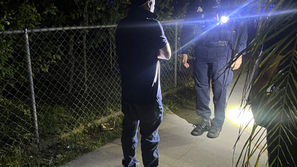Some outlaws reached ends of ropes
- Bill Coate
- Oct 5, 2019
- 3 min read

Madera County Historical Society
Samuel Ashe Holmes came to Madera County as part of the Alabama Colony. He became Fresno County’s first Superior Court Judge, and in that capacity ordered the last legal hanging outside the walls of a prison.
Historians tell us there has been only one legal hanging in these parts, and that was the execution of Dr. Frank O. Vincent in 1893. From this meager statistic, one might assume that folks were a little soft-hearted around here. After all, one legal hanging — that’s not very many.
When, however, one takes into account all of the times a criminal met his end through extra-legal means, one gets a clearer picture of pioneer society in what is now Madera County. Our history is filled with lynchings.
The first illegal hanging to occur within the boundaries of what is now Madera County took place in 1863. One A. L. Dixon was strung up somewhere between Coarsegold and the Fresno River. He was part of a gang of thieves who had infested the area for some time, plundering the mining camps and the stores. The outlaws primarily confined themselves to robbing the Chinese, since they were the least likely to retaliate. Finally, however, the citizens had enough, so they organized and went after the gang, all of whom got away except Dixon. He was hanged to the nearest tree and then buried close by; His grave was still marked as late as 1900.
The next year another lynching took place in the mountains, and this was also for stealing. James Rains was caught pilfering in his neighborhood. So exasperated were the people over the thefts and depredations, they decided to make an example of Rains, so he was hanged from a tree at Finegold, half way between present day O’Neals and North Fork.
In that same year, 1864, one of the most famous of all local hangings took place along the San Joaquin River just the next day, when he went in search of his stolen rope, he found it on the same gallows tree with the ghastly figure of a man still swaying back and forth. Judge Lynch had prevailed with the help of a boy and his calf.
It was nine years before another lynching took place in present day Madera County. As in the case of the Millerton hanging, the crime was once again the murder of a sheepherder, this time a Chinese, by two Indians. They were hanged near Jone’s store on the north bank of the San Joaquin River.
Just a few months after old Judge Lynch took care of this case, he had to act again. The victim was another Indian who was hanged about a half-mile from Millerton for having violated a young girl. He fled to Centerville on the Kings River, but was subsequently caught, brought back to the county seat, and hanged.
Of course history will never forget the lynching of Victor Adams in 1895. Having been accused of shooting his father-in-law, Judge I.L. Baker, to death in an argument over a horse, Adams was apprehended by the dead man’s brother. On the way to the constable, a lynch mob intercepted Adams and his captors and relieved them of their prisoner. In less than an hour, Adams was stretched out beneath the limb of a huge oak tree that still stands on the O’Neals-to-North Fork road. Such was the contempt with which the community held Adams that they left his body hanging from the tree for two days!
There were, no doubt, other lynchings in the county. In 1893, a local newspaper estimated that there had been at least a hundred vigilante hangings in the county over the prior 37 years. The above examples, however, will suffice to show that lynch law was alive and well throughout our pioneer past, notwithstanding the fact that we’ve had only one legal hanging.
























Comments